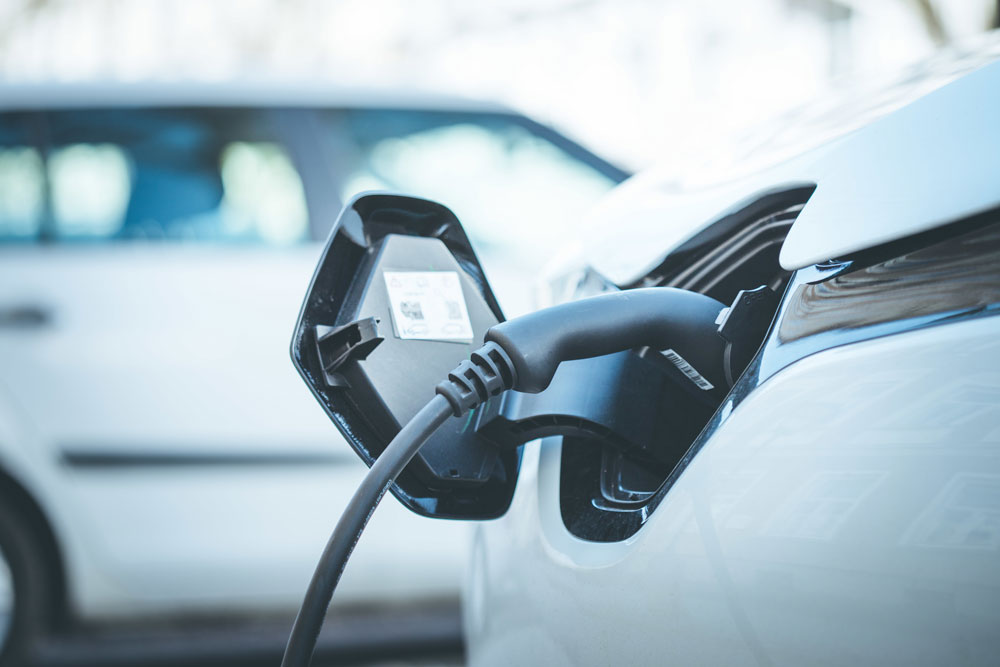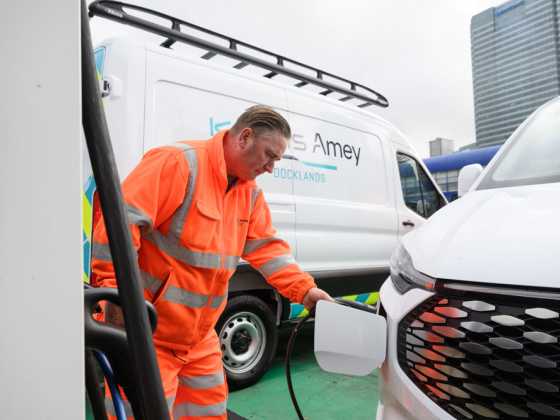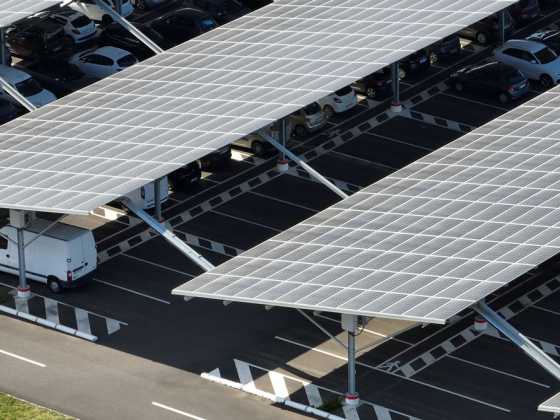Building future infrastructure fit for EV fleets

Fleets play a pivotal role in keeping our country running. Matthew Adams, transport policy manager at the REA, discusses how to ensure their needs are met when charging infrastructure is designed and installed
As the main source for the growing second-hand EV market, fleets are a paramount piece of the puzzle when it comes to hitting zero-emission vehicle targets, and they must be considered in public charging infrastructure. This is particularly necessary due to the significant demand for public charging infrastructure to be fit for vans – without it we risk delays to electrification of fleets while we wait for the infrastructure to catch up.
RECHARGE UK, the EV arm of the Association for Renewable Energy and Clean Technology (REA), recently published a report, Charging Forward to 2030, which has assessed what the public charging demand will likely be per postcode in GWh by 2030, providing DNOs and Local Authorities with an understanding of the amount of investment in grid infrastructure and chargepoints they are likely to require.
The report also assesses the current policy and regulatory barriers to meeting charging demand in 2030 and how we can resolve them. It goes on to map out what likely skills gaps there will be by 2030 in the EV sector, focusing on chargepoint installers and EV engineers. Lastly, it looks at how to ensure everyone can access a chargepoint in the car and van transition to electric, and how the UK can better utilise its chargepoints.
A van standard
For fleet operators, we have called for a van standard to be introduced as part of our campaign to ensure public chargepoints are accessible for everyone. Local authorities currently rely on fleet operators telling them what they need from charging infrastructure. However, a van standard, local authorities have told us, would be welcome to ensure there are clear guidelines to follow, enabling their chargepoints to be utilised by fleets while supporting local business.
PAS 1899, an accessibility standard introduced by BSI after years of industry consultation is presently used by local authorities and chargepoint operators to ensure chargepoints are accessible to wheelchair users. It also involves guidance on the width of the parking bays, the removal of obstructions to the chargepoint such as kerbs or gravel, and the weight and length of the cable.
For the van standard, we propose a similar approach to PAS 1899, looking at the width and length of the parking bay, the length of the cable, and ensuring a van can drive through the available space. However, we cannot do this on our own and need expert fleet managers and operators to help us design the guidance. So, this is my call to GreenFleet readers to help us design a standard that will help you. Please reach out if you would like to be involved and help inform it, as we begin looking for industry partners to build this standard with.
Our report, with thanks to Field Dynamics who produced the data, identifies the level of charging demand per vehicle type in 2030 and highlights that vans will undoubtedly have the highest public charging demand in GWhs.
The data clearly suggests that fleet drivers who need to bring their van home with them will need to interact with public charging infrastructure more, due to not having a driveway, while other fleet drivers may also need to recharge on their journey. This charging demand is very significant and highlights the overwhelming need for public charging infrastructure to be fit for vans, otherwise we risk delays to electrification of fleets while we wait for the infrastructure to catch up.
A mandated charging plan
This is why, in addition to our call for a van standard, we recommend that local authorities be mandated to have a charging plan, highlighting the need to engage with fleet managers and industry while creating them.
According to the BVRLA, only three per cent of local authorities have clearly engaged with, or considered the needs of the fleet sector and over 40 per cent have not engaged with the fleet sector to date . This must change going forward to support local business and empower fleet operators to switch to electric.
Peter Massie, chief operating officer at Syzygy Consulting, a sponsor of the RECHARGE UK Report, shared his thoughts below: “To allow van fleet operators to play their part in, and fully benefit from, the net zero /green economy, the transition of commercial fleets needs be enabled by public charging infrastructure. Unlike larger commercial vehicle fleets, which will rely more on depot charging facilities and use high-power chargers at motorway services, light commercial vehicles have more variable duties and operate in urban environments typical of last mile / local delivery routes.
“The prevalence of mobile engineering teams, home-based and privateer drivers means that public charging facilities will be relied upon to a much greater extent which necessitates that the bays at these charge hubs are (re)developed to be suitable for vans as well cars – e.g. wider, longer and accommodating some drive through bays, wider turning circles, with chargers placed to accommodate the range of charge port placement of different vehicles.
“Progressive regional authorities have gone so far as to define ‘transit hubs’ on the main access routes into city and industrial centres to provide facilities which are focused on commercial fleets to help accelerate light goods vehicle EV adoption and minimise the potential contention for charging with car users in less suitable (typically car park spaces at retail or drive through) facilities.
“We need to go beyond simply providing power sourced from renewable energy and integrate local, if not on-site, generation into the energy delivery strategy for depots and charge hubs alike, so as not to rely solely on energy delivered via the local district network. This brings the added benefits of reduced peak connection requirements and most efficient investment in distributed, flexible energy assets.“
Energy considerations
RECHARGE UK are uniquely positioned to work with the wider energy sector to help deliver on these asks, with membership in the REA stretching across the renewable generation and clean technologies sectors. As a result, we have been able to produce analysis of how much of the UK’s energy is likely to be renewable in 2030 and have made suggestions on how to accelerate deployment of renewable generation. This will add flexibility to the local grid network and enable fleets to charge their vehicles with less or no grid reinforcement.
Fleets play a pivotal role in keeping our country running and in growing the second-hand EV market, it is vital they are considered in public charging infrastructure development. I would encourage all readers of GreenFleet to contact their local authorities and offer to share data with them on their charging needs; working with us on the joint industry effort to create a van standard.






